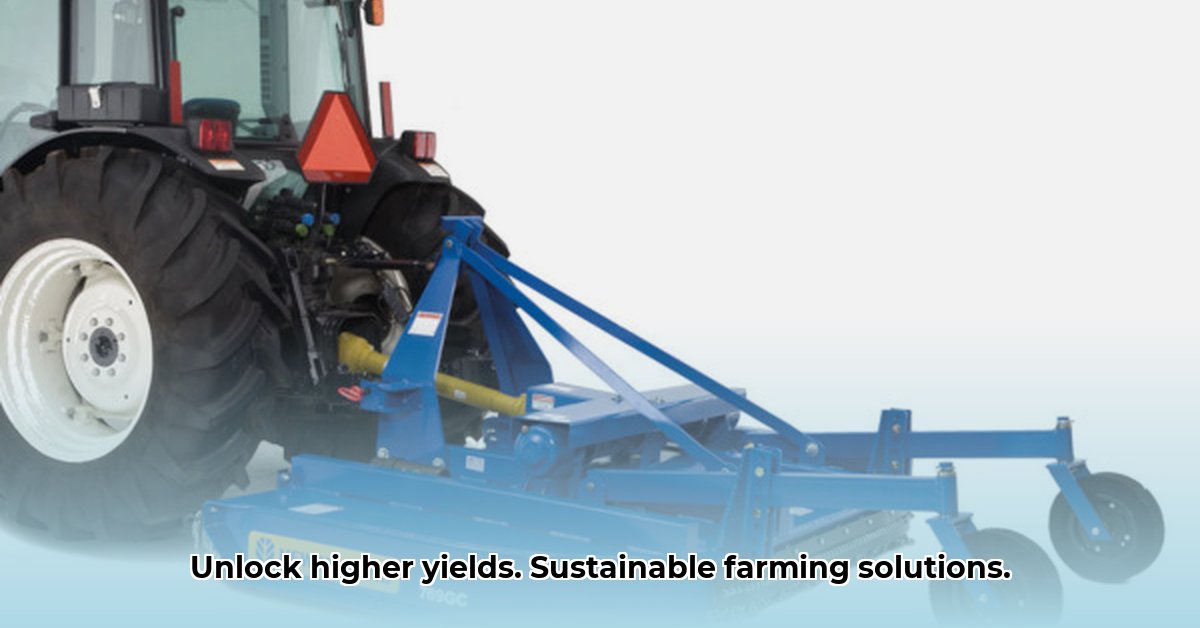
Choosing the right tractor implements is crucial for maximizing efficiency and minimizing environmental impact. This article helps you navigate the decision between New Holland's OEM (Original Equipment Manufacturer) attachments and the cost-effective alternatives offered by third-party suppliers. We'll explore the advantages and disadvantages of each, providing actionable advice tailored to farmers of all sizes. For more information on tractor attachments, check out this helpful resource: Tractor Attachment Guide.
New Holland Attachments: Precision and Performance
New Holland designs its implements for seamless integration with its tractors. This integrated system promises optimized performance, potentially reducing downtime and fuel consumption. The snug fit minimizes compatibility issues, and the manufacturer's support network offers readily available assistance. However, this precision engineering typically translates to a higher initial investment. You're paying for a guaranteed fit, comprehensive warranties, and robust customer support. Is this premium worth it for your operation? That depends on your individual needs and budget. A rhetorical question to consider: Will the increased upfront cost be offset by reduced maintenance and downtime in the long run?
Third-Party Attachments: Value and Variety
Third-party suppliers, such as Everything Attachments, offer a diverse range of implements often at significantly lower prices. This affordability can be a game-changer, particularly for budget-conscious farmers. Imagine the potential – those savings could fund essential upgrades or improvements elsewhere on your farm. However, it's crucial to remember that lower costs don’t always mean lower quality. Thorough research is crucial to find reputable suppliers with reliable warranties and customer support. The quality of parts can vary, emphasizing the need for careful evaluation before purchasing. A key fact to consider: While third-party attachments might cost less initially, their longer-term operational costs might offset those savings.
Sustainability: A Holistic Approach
Sustainable farming isn't just about fuel efficiency; it's about the entire lifecycle of your equipment. New Holland promotes sustainability through efficiency gains in its designs, potentially reducing fuel consumption. However, data on the complete lifecycle environmental impact of both OEM and third-party parts remains limited. Third-party options could offer a more sustainable approach if manufactured with recycled materials or sourced locally, reducing transportation emissions. But this is not a universal truth. The key is to assess the entire process; from production through to responsible disposal.
Actionable Intelligence: A Step-by-Step Guide
To help you make an informed decision, follow these steps:
Assess Your Needs: Identify the specific tasks your implements will perform and the frequency of use. This assessment allows you to tailor your search to your specific requirements.
Research Thoroughly: Compare specifications, prices, warranties, and customer reviews from multiple sources. Online forums and agricultural publications offer valuable insights. This step is critical for making a sound decision, regardless of your operational size.
Prioritize Value: Consider the balance between upfront cost and long-term value. Analyze which attributes are most crucial to you and prioritize accordingly: extended lifespan, ease of maintenance, etc.
Calculate Lifecycle Costs: Factor in initial cost, maintenance, potential repairs, and resale value to arrive at the true cost of ownership. This detailed calculation will highlight the real financial implications of your choice.
Seek Expert Opinions: Engage with experienced farmers and agricultural professionals to learn from their experiences and gain valuable insights. Their real-world advice can be invaluable.
Navigating the Risks: A Practical Framework
Farming inherently involves risks. This matrix helps evaluate the potential challenges associated with different choices:
| Technology/Practice | Short-Term Risks | Long-Term Risks | Mitigation Strategies |
|---|---|---|---|
| Third-party Attachments | Compatibility issues; lower-quality components; lack of warranty support | Reduced lifespan; increased maintenance costs; safety concerns | Meticulous research; choose established suppliers; verify compatibility; consider extended warranties; read reviews! |
| New Holland OEM Attachments | Higher initial investment; potential for higher maintenance (depending on part) | Fewer parts availability/longer lead times | Thorough research of local dealers, maintain strong relationship with new Holland service dealer |
Conclusion: Making the Right Choice
Selecting between OEM and third-party tractor implements requires careful evaluation tailored to your farm's unique needs and economic realities. Consider the initial cost, maintenance expenses, longevity, sustainability, and the level of support offered by each supplier. By following the actionable steps and utilizing the risk assessment framework provided, you can confidently choose the implements that best support your farm's success.